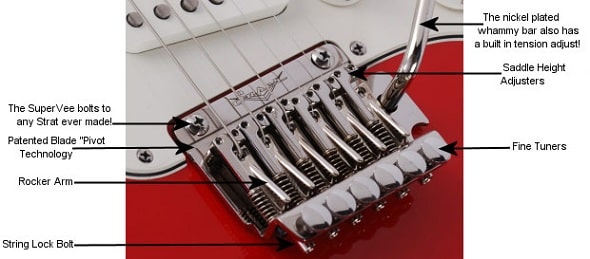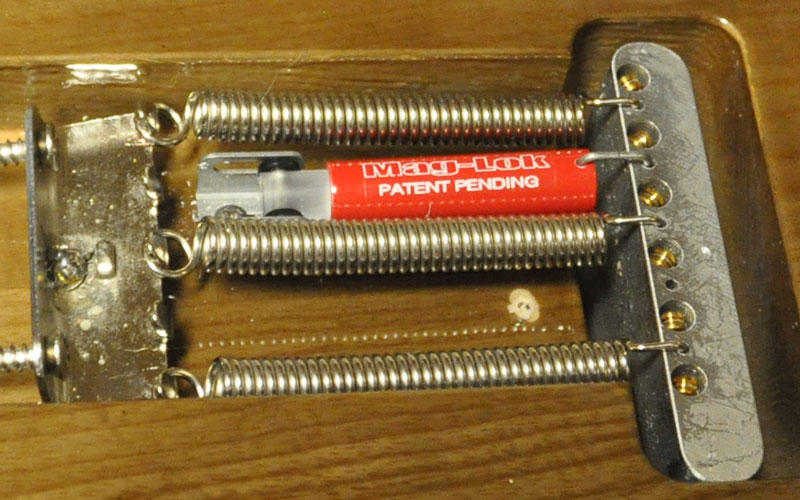OK... here's a superficial preference of mine, but I'll cop to it... I love the look of a stock strat. That said, most of my guitars are sneakily modded, but the bridge and tuners *look* pretty much stock. I like Wilkinson bridges and roller nuts, plus locking tuners. The overall result is a very stable guitar that holds up to fairly wild whammification, and maintains a classic vibe. With my locking tuners I probably have 1/2 of a wrap on the post when fully tuned, so I don't have excess string to bind or re-tension incorrectly.
I've had Floyd Rose bridges and locking nuts on my guitars in the past, and that system is incredibly stable, even under vigorous rock divebombing. I don't like the look of all that extra hardware on an otherwise classic strat-style guitar, but I think it looks really great on a more aggressively appointed rock guitar (e.g., Jackson, Charvel, etc). I had a terrific Jackson in the late 80s with a pointy headstock; that thing was a ferocious rock machine and it looked really good. It also had one of the best classic strat tones I've ever gotten. Oh, the irony...




